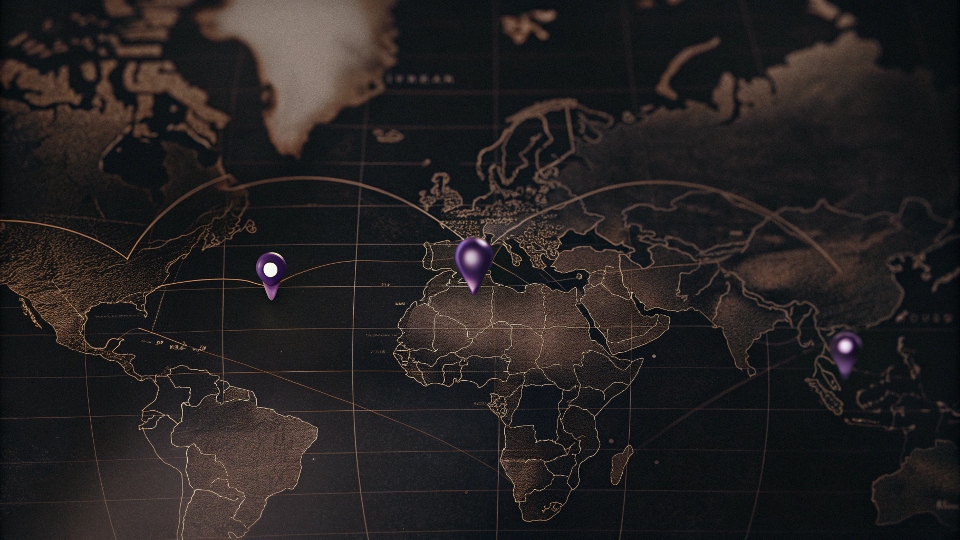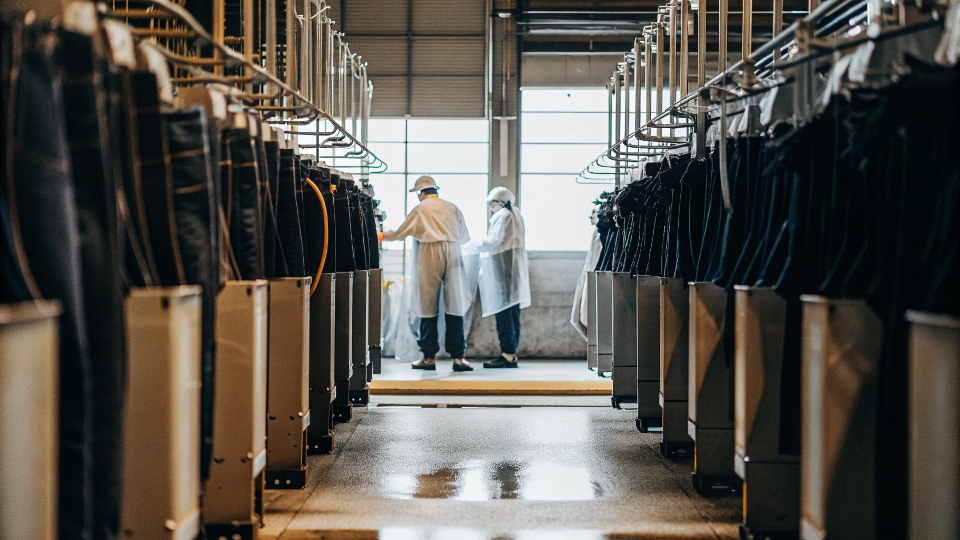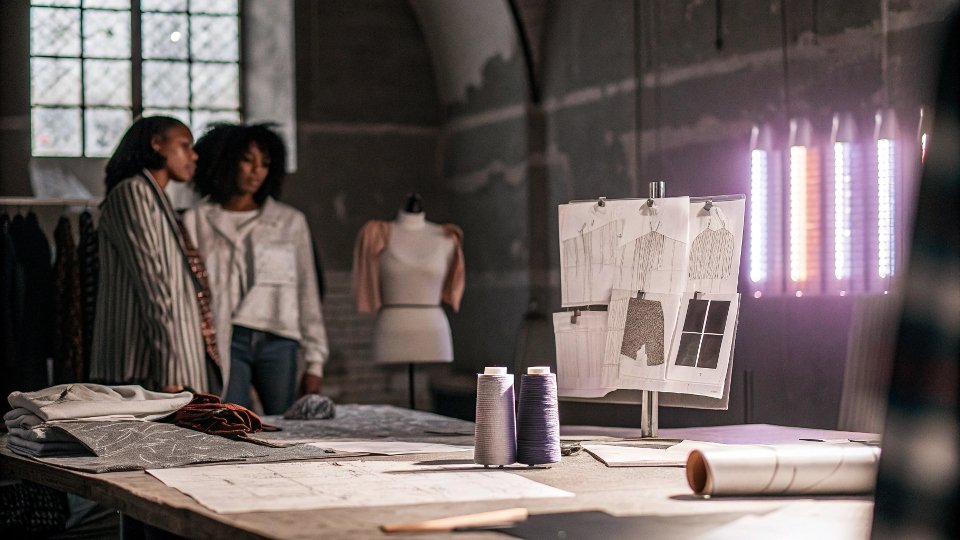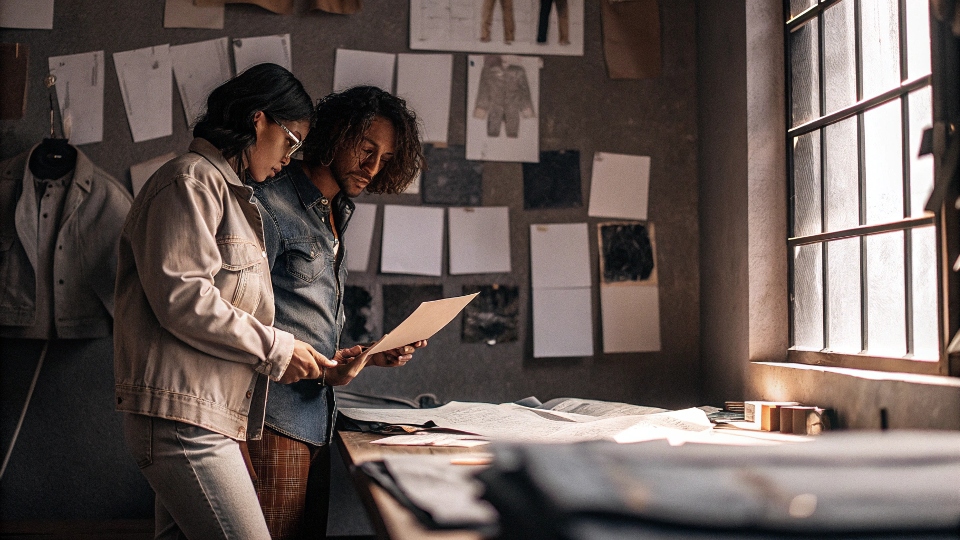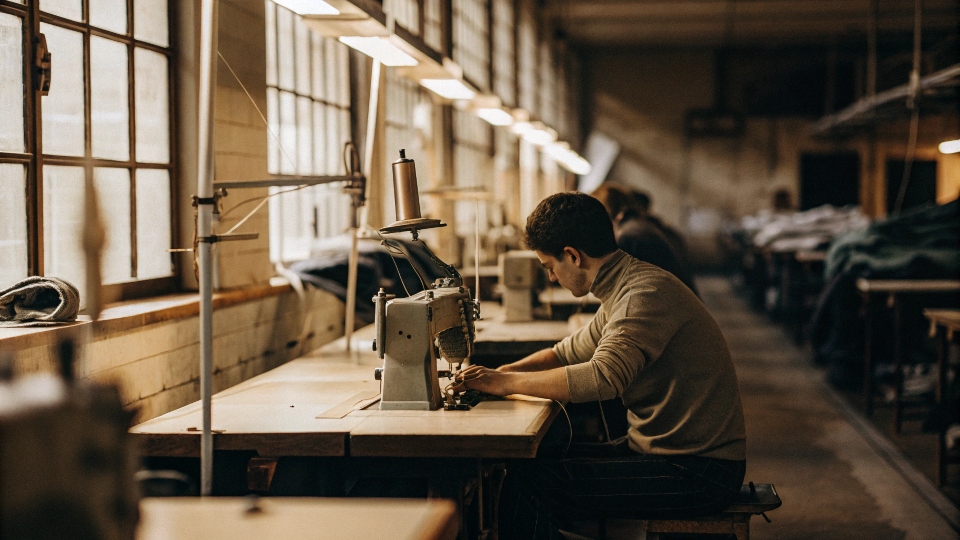You love the unique style of Purple Brand jeans1 but have no idea where they are actually made. This lack of transparency can be frustrating when you want to understand what you're buying.
Purple Brand jeans do not have one single factory. They use a global network of specialized manufacturers2 in several countries, including the USA, Italy, and China, to produce their high-quality, design-intensive denim3.
As someone who has run a denim factory for over 20 years, I can tell you this is a common strategy for high-end brands.It is not about finding the cheapest place, but the best place for a specific task.
A brand might source its denim fabric from Italy4, have it cut and sewn in Los Angeles5, and then send it to a specialized wash house in China for the final, complex finishing. This is how brands achieve a truly unique product.
Are Purple Jeans made in China?
You see the "Made in China6" label and might immediately think of low quality or mass production. This old stereotype makes you question the value of a premium brand that produces there.
Yes, a significant portion of Purple Brand's production happens in China. They partner with high-end factories7, especially in denim hubs like Xintang, Guangzhou, which are world-renowned for their advanced washing and finishing techniques.
My own factory, DiZNEW, is a testament to how much Chinese manufacturing has evolved. The idea that "Made in China" means "cheap" is at least a decade out of date.
For complex denim washes—the kind of distressed, vintage looks that Purple Brand is famous for—the facilities and skilled technicians in places like Guangzhou are some of the best in the world.
Brands come here for the expertise they cannot find anywhere else. They come for the artistry, not just the cost.
Dive Deeper: Re-evaluating "Made in China"
1. A Hub of Specialized Skill
For premium denim, the final wash is everything. It can make or break the product. The region of Xintang in Guangzhou has been a global center for denim production for decades.
This has created a massive pool of talent—people who are true artists in techniques like hand-sanding, laser distressing, and complex color treatments. Brands like Purple need this level of craft to bring their designs to life.
2. Cutting-Edge Technology
Modern Chinese factories have invested heavily in sustainable and advanced technology8. This includes water-saving ozone machines and precise laser-etching systems for distressing.
This tech allows for incredible consistency and reduces the environmental impact, which are crucial factors for any modern brand.
It's a combination of human artistry and high-tech machinery. A skilled factory can execute a designer's vision with incredible precision.
| Old Perception of "Made in China" | Modern Reality for Premium Brands |
|---|---|
| Low Cost, Low Quality | High Skill, High Value |
| Mass Production Only | Specialized, Small-Batch Capability |
| Basic, Simple Products | Complex Finishing & Artistry |
| Outdated Technology | Advanced, Sustainable Machinery |
Where did Purple Brand jeans come from?
You see a popular brand like Purple and assume it's part of a huge, faceless fashion corporation. You wonder about the real story behind its rapid rise to fame.
Purple Brand was founded in 2017 by Luke Cosby and Rob Lo. They were industry veterans who saw a gap in the men's denim market and decided to create their own brand.
This is a story I admire because it comes from real product knowledge. The founders did not just have a good idea; they understood the entire process, from sourcing fabric to the final wash.
They wanted to offer the quality and fit of high-end luxury denim9 but at a more accessible price point.
Their goal was to merge streetwear aesthetics with the principles of luxury garment construction. This product-focused approach is what separates successful brands from the ones that disappear after one season.
Dive Deeper: The Brand's Founding Philosophy
The success of Purple Brand wasn't an accident; it was built on a clear strategy that addressed a specific need in the market.
1. Identifying the Market Gap
In the mid-2010s, the menswear market had two main options for denim. There were the ultra-expensive luxury brands, which cost a fortune, and the mass-market brands, which often lacked a distinct style or premium feel.
Cosby and Lo targeted the space in between. They aimed to create a product that felt luxurious and was highly detailed but sold for a price that a stylish consumer could actually afford.
2. A Focus on Fit, Fabric, and Finish
The brand's core philosophy revolves around three pillars.
- Fit: They were obsessive about creating modern fits that were both comfortable and flattering.
- Fabric: They sourced high-quality denim with unique textures and the right amount of stretch.
- Finish: This is where they really excelled. They focused on innovative washes and detailed distressing that made each pair look unique. As a washing expert, I can tell you their techniques are complex and require a very high level of skill to execute.
| Core Pillar | Purple Brand's Approach | Why It Matters |
|---|---|---|
| Fit | Offers a variety of modern silhouettes, not just skinny. | Appeals to a wider, style-conscious audience. |
| Fabric | Uses premium textiles from trusted mills. | Ensures comfort, durability, and a better look. |
| Finish | Employs complex washing and distressing techniques. | Creates a unique, high-end aesthetic. |
Who is the maker of Purple Jeans?
You want to know who is behind the brand. Is it one person, a team, or a corporation that owns them? Understanding the "maker" gives you a better sense of the brand's identity.
The "makers" of Purple Brand jeans are its founders, Luke Cosby and Rob Lo. While they use partner factories for production, they are the visionaries who control every aspect of the design and final product.
In today's global apparel industry, the concept of a "maker" has changed. It's no longer just the person sewing the seams. The true maker is the one who holds the vision.
The founders of Purple aren't just business owners; they are the product architects. They work closely with a network of specialized partners—fabric mills, sewing factories, and wash houses—to bring that vision to life.
A factory like mine acts as a technical partner, translating their creative ideas into a tangible, high-quality garment.
Dive Deeper: The Modern Manufacturing Partnership
A brand like Purple does not succeed by simply sending a drawing to a factory and hoping for the best. It's a deep, collaborative process.
1. The Brand as the Architect
The founders and their design team are responsible for the core idea. They decide on the fit, choose the fabric, and create a "recipe" for the final wash. They define what the product should be.
2. The Factory as the Expert Executor
The brand then seeks out partners who have the specific skills to execute that vision. For a complex, distressed wash, they might come to a factory in Guangzhou.
For a specific type of raw selvedge denim, they might work with a factory in Los Angeles. The factory's role is to use its expertise and machinery to perfectly replicate the designer's prototype, at scale and with consistent quality. It's a partnership where both sides bring their expertise to the table.
| Role | Responsibilities | Key Contribution |
|---|---|---|
| Brand (The Maker) | Design, Fit, Fabric Selection, Wash Concept | The Vision |
| Partner Factory | Pattern Making, Sewing, Washing, Finishing, Quality Control | The Execution |
Are any jeans manufactured in the USA?
You hear a lot about manufacturing moving overseas. You wonder if it's still possible to buy high-quality jeans that are genuinely made in the United States.
Yes, jeans are still manufactured in the USA, and there is a thriving market for premium, American-made denim. The industry is primarily centered in Los Angeles, which is famous for its high-quality production and wash houses.
While the days of massive, Levi's-style factories producing millions of basic jeans in the USA are mostly gone, a new kind of manufacturing has taken its place.
The US industry now focuses on the high end of the market. Brands that produce in the USA are typically focused on craftsmanship, small-batch production, and using premium materials.
Los Angeles, in particular, has a complete ecosystem for creating luxury denim, from pattern makers and sewers to some of the most innovative wash facilities in the world. It's a different scale, but the quality is undeniable.
Dive Deeper: The "Made in USA" Proposition
Buying American-made denim today means you are buying into a specific type of product with a unique set of values.
1. The Los Angeles Hub
LA is the heart of the American denim industry. Decades of experience have created a community of highly skilled specialists.
Many of the world's most innovative and creative wash techniques are developed in LA's laundries. This concentration of talent makes it the ideal place for premium brands that want to be hands-on with production.
2. Quality Over Quantity
The key difference is the scale. US factories typically work in smaller batches, which allows for a much higher degree of quality control. The focus is on perfect construction, intricate details, and premium finishing.
This is why "Made in USA" jeans often come with a higher price tag. You are paying for the labor, the skill, and the higher-quality components that are often used. This is a choice for the consumer who values craftsmanship and wants to support a domestic industry.
Conclusion
Purple Brand jeans are made through a global partnership with expert factories in the USA, Italy, and China. The location is chosen based on skill, proving that quality, not just a country's label, defines a premium garment.
-
Discover the origins of Purple Brand jeans and understand the craftsmanship behind their unique style. ↩
-
Learn how a global network enhances quality and design in premium fashion brands. ↩
-
Explore the characteristics that make denim high-quality and design-intensive. ↩
-
Find out what makes Italian denim fabric a top choice for luxury brands. ↩
-
Understand the advantages of LA's craftsmanship in denim production. ↩
-
Challenge the stereotype of 'Made in China' and learn about quality denim production. ↩
-
Understand the characteristics that set high-end factories apart in denim manufacturing. ↩
-
Discover how sustainable practices are integrated into modern denim production. ↩
-
Explore the features that distinguish luxury denim from regular denim. ↩

